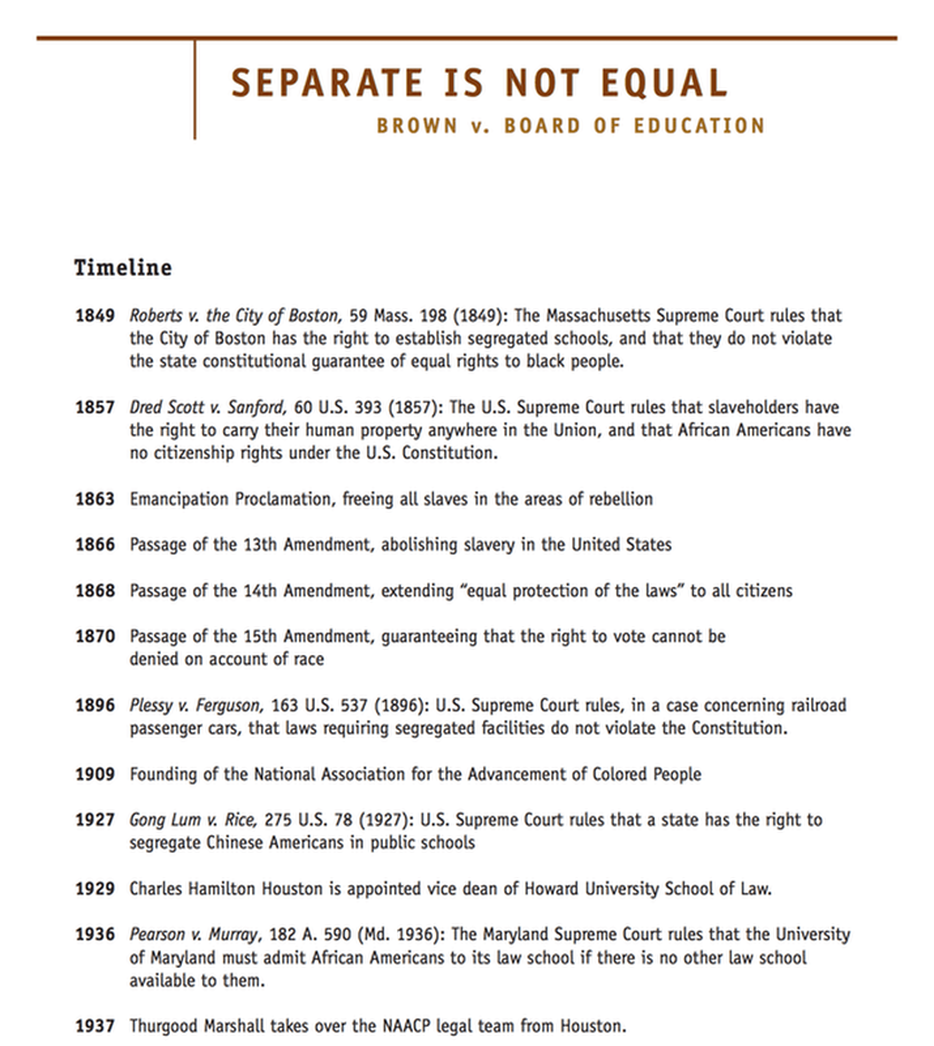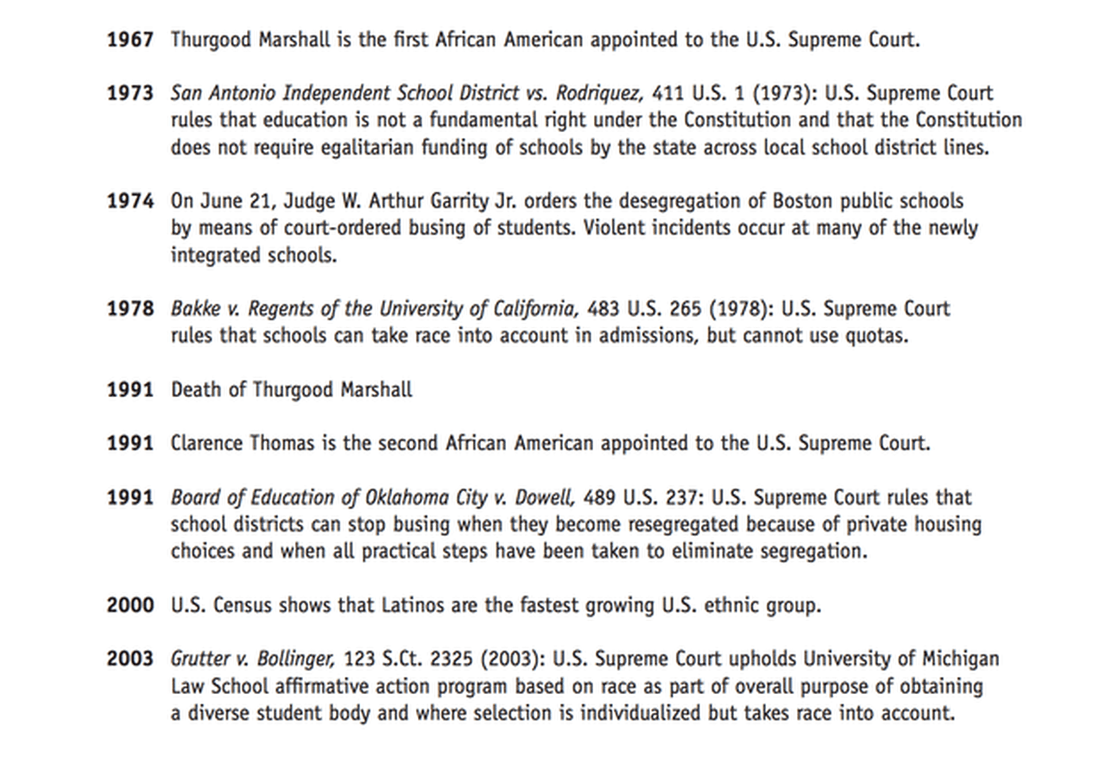Image Above: "Mother (Nettie Hunt) and daughter (Nickie) sit on steps of the Supreme Court building on May 18, 1954, the day following the Court's historic decision in Brown v. Board of Education. Nettie is holding a newspaper with the headline 'High Court Bans Segregation in Public Schools.' Reproduction courtesy of Corbis Images." Caption and image courtesy of pbs.org.
In 1954, African-American students filed a series of Supreme Court lawsuits, known as Brown v. Board of Education, for the right to attend white public schools, and won. Lum v. Rice was cited as a precedent, but the outcome was very different. Finally, schools across the South were required to allow students of every race to attend.
"Most southern whites, regarding education of blacks as a waste of time, had no interest in reforming this system...In Atlanta during the 1940s, overcrowding in black elementary schools led to double sessions that limited children to three hours per day. Many black children roved the streets during the rest of the time... Only after 1950, when the NAACP brought suit against segregation, did worried city and school officials build new facilities so as to claim that they were meeting the constitutional principle of separate-but-truly-equal. Disgusted blacks called these hastily constructed buildings 'Supreme Court' schools."-James Patterson. |
"As a jurisprudential event, it breathed a new life into the equal protection clause of the fourteenth amendment, a clause conceived in a desire to ensure equality before the law but whose growth had been almost smothered by the Court's decisions in Plessy v. Ferguson and Gong Lum v. Rice." -Kenneth Ripple. |
"In each step toward Brown, the courts, and ultimately the Supreme Court, were presented with a litigation theory which would permit them to grant relief without squarely confronting the necessity of overruling the precedent that 'separate' is 'equal'. - Kenneth Ripple |
"Gong Lum and other such cases of non-Black challenges of segregation policies, however, have been largely overshadowed by the landmark decision in Brown."-Deana Chuang. |


